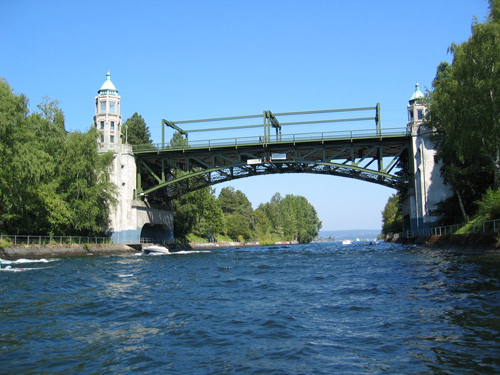Gendler V. State of Washington / 2010
Articles
SEATTLE TIMES: Injured cyclist would trade $8 million settlement to get his life back, October 2010
SEATTLE TIMES: Cyclist paralyzed in crash sues state, February 2009
SEATTLE POST-INTELLIGENCER: WSDOT to pay $8 million over Montlake Bridge bike accident
$8,000,000 settlement for a defective bridge where a gap in the bridge deck was too wide, allowing a bicycle tire to wedge in the gap, throwing the rider to the ground and paralyzing him.
You may have heard an interview on NPR, read a blog post, or read a story in The Seattle Times about this case. In the era of media spin and 15-second sound bites, it’s more often that we are forced to make assessments without the benefit of the facts. What apparently outraged some was the $8 million settlement. If you are interested in knowing the facts behind the story, read on. Make, remake, or confirm your opinion of what this case was about.
Government Liability
Washington State owns the Montlake Bridge. Washington State has a duty to make all roadways safe for bicyclists in addition to cars/all motor vehicles. The roadway across the Montlake Bridge was unsafe for bicycles. The State knew this, yet chose to do nothing to make it safer. No other business or government entity was responsible for the safety of the Bridge besides the State.
The Montlake Bridge
Since 1999, the Montlake Bridge had been unsafe for cyclists (the State repaired the hazard in 2009). Washington State started a retrofit of the Montlake Bridge in Seattle. The project included replacing the metal grate surface of the traffic lanes. The replacement grate was of a different design than the existing. The seam, formed by two abutting sections of grate, sits in the middle of the lanes of traffic. The specifications for the Bridge deck called for a narrow seam, one that would not have posed a danger to bicycle tires. The State allowed the deck seam to be wider than the specifications called for (based on tolerances), wide enough for a road bike tire to drop into it.
1999 - Notice to the State of a Danger
During the deck replacement project, the State found out how dangerous the seam could be. A cyclist crashed when his front bicycle tire wedged in the seam and he was thrown to the deck face-first. Concerned about other cyclists, he contacted the City of Seattle, who contacted the State’s project manager to inspect the problem. The State’s project manager made a note about the crash in his project diary.
1999 to 2009 - The State Ignored the Danger
- The State’ project manager does not recall ever following up.
- The State could have erected a warning sign – it did not.
- The State could have fixed the problem – it assumed this would not happen again.
- The State could have closed the roadway to bicycle traffic – it did not.
Mickey's Crash - October 28, 2007
Mickey met up with a friend to go for a ride around the south end of Lake Washington. They intersected near UW Medical Center. It was a quiet Sunday afternoon on Montlake, not much traffic, so they traveled on the road. There was no traffic within a block’s length behind them. Mickey rode in the right lane. Halfway across the Bridge he switched to the left lane to prepare for a left turn. As he traversed the lane, he was suddenly thrown over his front bars onto the Bridge deck on his back. His front wheel had wedged into the seam in the deck. It took two people to dislodge the wheel.
Bicycles on the Bridge
In comments to the multiple articles written about Mickey’s case, many were critical of his decision to ride on the roadway rather than on the sidewalk. This case settled in the months leading up to the trial date, but in pre-trial motions the court determined that Mickey had the right to ride on the roadway and that Mickey had the right to travel in the left lane because he was preparing for a turn.
- “[I]t is the ruling of this Court that bicycles are entitled to travel upon the Montlake Bridge roadway as a matter of law.” Judge McPhee, February 16, 2010.
- “Plaintiff Michael Gendler’s operation of his bicycle in the inside (left) lane of the Montlake Bridge at the time of the subject incident was authorized by law.” Judge McPhee, May 28, 2010.
The Settlement Amount
What does $8 million mean? It’s not winning the lottery. It’s not a windfall. The settlement amount represents the exorbitant costs of the care for someone with a spinal cord injury. To learn more about Mickey’s life as a quadriplegic, read this article.
The $8 million settlement was well justified, as it will help to cover exorbitant medical bills, ongoing medical care, 24/7 assistance, facility accommodations at home and at work, etc. However, proponents of legislation to reduce the frequently target the Gendler case because of the high settlement amount. We believe that most Washingtonians recognize the importance of keeping the government accountable, when government entities ignore safety issues that could ultimately result in catastrophic injuries to innocent citizens.

